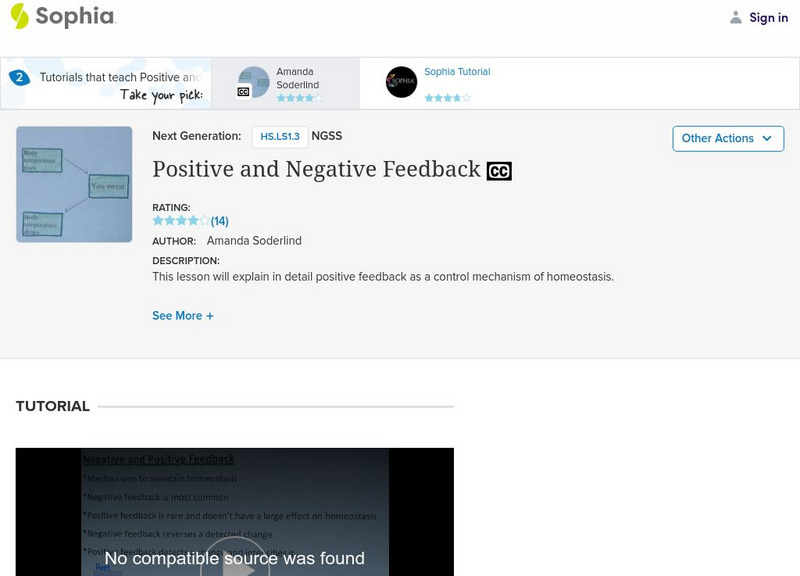Science360
Silk - If Spiders and Worms Can Do It, Why Can't We
Future research could spin up new medical and materials breakthroughs based on silk, but obstacles remain in quest to replicate natural silk production, scientists say in this week's edition of Science.
FuseSchool
Negative Feedback
Negative feedback sounds like a bad thing, right? Well actually it’s not bad at all. In fact it’s a very important process that occurs in our bodies all the time. But what does it actually do? What does negative feedback mean?
SciShow
The Male Biological Clock
Another aging rock star, another baby, does age have any affect on sperm, or are these little swimmers seemingly viable until death?
msvgo
Digestion and Absorption of Food
Explain the process of digestion of each food component. Describe how and where various components of food are absorbed.
Curated Video
Adrenaline and Thyroxine: Hormones and their Effects on the Body
This video explains the functions and production of two important hormones in the body: adrenaline and thyroxine. The video provides a clear explanation for how adrenaline is released in times of stress or fear, and how it prepares your...
Bozeman Science
Concept 7 - Stability and Change
Paul Andersen explains how stability and change are regulated in systems through controls and feedback. Controls are used to regulate matter and energy flowing into a system. Feedback mechanisms within the system are used to regulate...
Curated Video
Masters of Feedback: Kim Cameron - Positive Feedback
Kim Cameron is the founder of Positive Organizational Scholarship. This is the application of the ideas of Positive Psychology, Organizational Design, Citizenship, and much else, at the organizational level. At the heart of his thinking...
NASA
Small Steps, Giant Leaps: Episode 77, VERITAS Small Steps, Giant Leaps
NASA's John Brophy discusses the VERITAS mission to Venus.
Curated Video
Hormones: Adrenaline and Thyroxine
This video discusses two hormones produced by the body: adrenaline and thyroxine. The video provides an explanation of what hormones are, how they work, and the effects of adrenaline and thyroxine on the body. It also includes...
Curated Video
High Performance Scientific Computing with C 2.3: Discrete versus Fast Fourier Transform
How can we deal with spectral data? How can we apply divide-and-conquer approaches to numerical algorithms? • See how simple the DFT is to implement • Learn how to apply the divide-and-conquer approach for the FFT • See the huge speed-up...
Visual Learning Systems
What Is a Mammal?: What Are Mammals?
From dogs to squirrels to elephants, we are familiar with many different mammals. This video explores some of the fascinating features of this amazing group of animals. Concepts and terminology: backbone, fur, warm-blooded, milk, and...
Bozeman Science
Thinking in Systems - Level 5 - Simulating Systems
In this video Paul Andersen shows conceptual thinking in a mini-lesson on simulating systems. TERMS: Simulations - imitation of a situation or process Interactions - reciprocal (two-way) action or influence Energy - the ability to cause...
Bozeman Science
NGSS: Stability and Change
Build a strong foundation for your teaching of stability and change! The video addresses the Next Generation Science Standards Cross-Cutting Concept through insightful examples. The narrator includes ideas for introducing the standard in...
Sophia Learning
Sophia: Positive and Negative Feedback: Lesson 1
This lesson will explain in detail positive feedback as a control mechanism of homeostasis. It is 1 of 4 in the series titled "Positive and Negative Feedback."


